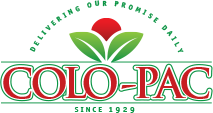
In North America, the word cilantro refers to the leaves of the coriander plant. It is commonly called cilantro because that is the Spanish name for the herb, and the herb is commonly associated with Mexican cuisine. Coriander or coriander seeds refer to the herb’s small bulbous fruit. The fruit and the leaves are considered distinct from one another in the cooking world as they have different flavor profiles and applications. The word coriander entered the English vocabulary sometime during the mid-thirteenth century when England interacted more extensively with continental Europe. The word originates from the Greek koriannon. The term cilantro is Spanish in origin and entered the American English lexicon due to the popularity of Mexican cuisine in North America. The coriander plant is used in many cooking traditions throughout the world, including Latin American, Tex-Mex, Mediterranean, Indian, Persian and Middle Eastern. The herb’s leaves contain a chemical called aldehydes that can affect different people in vastly different ways. To some people, the smell and taste of cilantro is pleasantly citrusy, almost sweet. To others, cilantro can smell and taste very bland, or even incredibly offensive. Humorously, there are whole websites dedicated to those who dislike cilantro. Cilantro haters often compare the smell and flavor of the herb to stinkbugs or sometimes soap. Cilantro is not an acquired taste, instead, it is believed that there is a genetic difference between cilantro haters and cilantro lovers which is responsible for the way we perceive the flavor of aldehydes in foods like cilantro. Don’t be discouraged by the cilantro haters, give it a try yourself and see how the flavor and smell affects you. For those who enjoy cilantro, the scent and flavor is described as being similar to lemon.
Cilantro is most commonly used as a garnish or added just as a dish is nearly done cooking because the flavor of cilantro is at its best when it is raw. The citrus flavor of cilantro pairs very well with tomatoes and avocadoes, as such, cilantro is very frequently seen in salsa and guacamole. It is also a great garnish on lean meats like fish and chicken. Yogurts and salads can be easily brightened up with the addition of some freshly chopped cilantro.
Fresh cilantro is generally a plain green color, vibrant but not overly bright. Cilantro looks very similar to flat-leave parsley, but the two herbs can be easily distinguished by smelling them. Cilantro will have a bright, lemon scent, whereas parsley will smell earthier. Any discoloration on the leaves is a sign that cilantro is no longer fresh and should not be used. Cilantro can be stored for almost a week in the fridge if the stalks of the plant are placed in a small amount of water in a jar, and covered with plastic wrap. It will last two or three days stored dry in a plastic bag in the fridge. When preparing cilantro, thoroughly rinse the leaves and pat dry. It is important to clean cilantro because dust and dirt tends to cling to the leaves.


 BACK TO PRODUCTS
BACK TO PRODUCTS